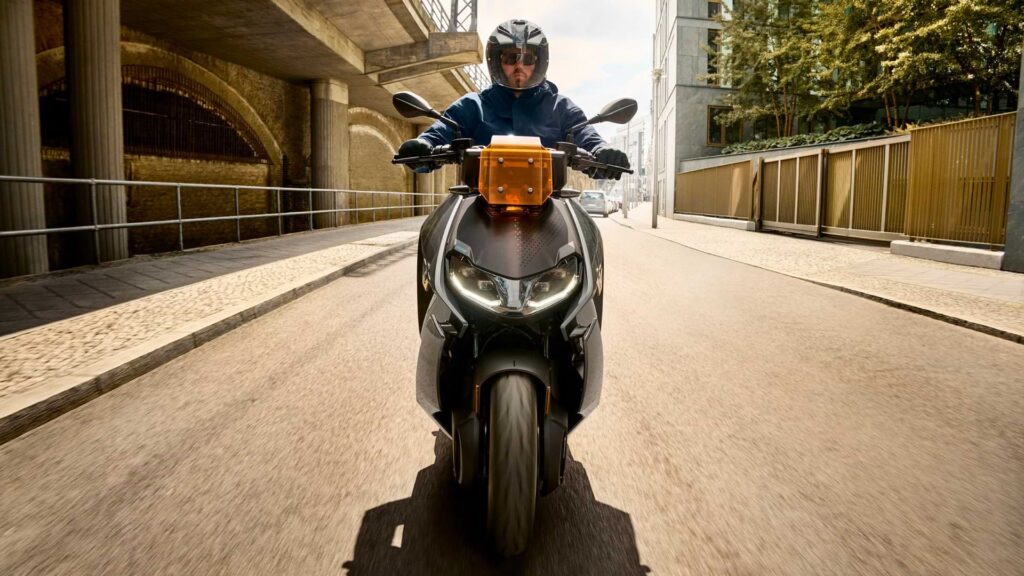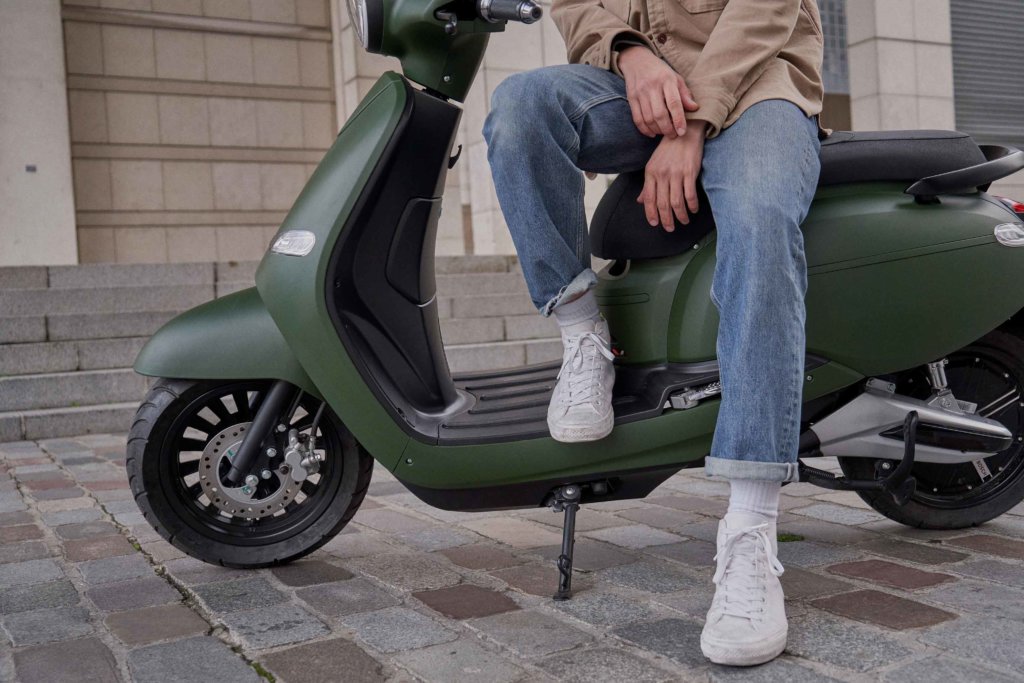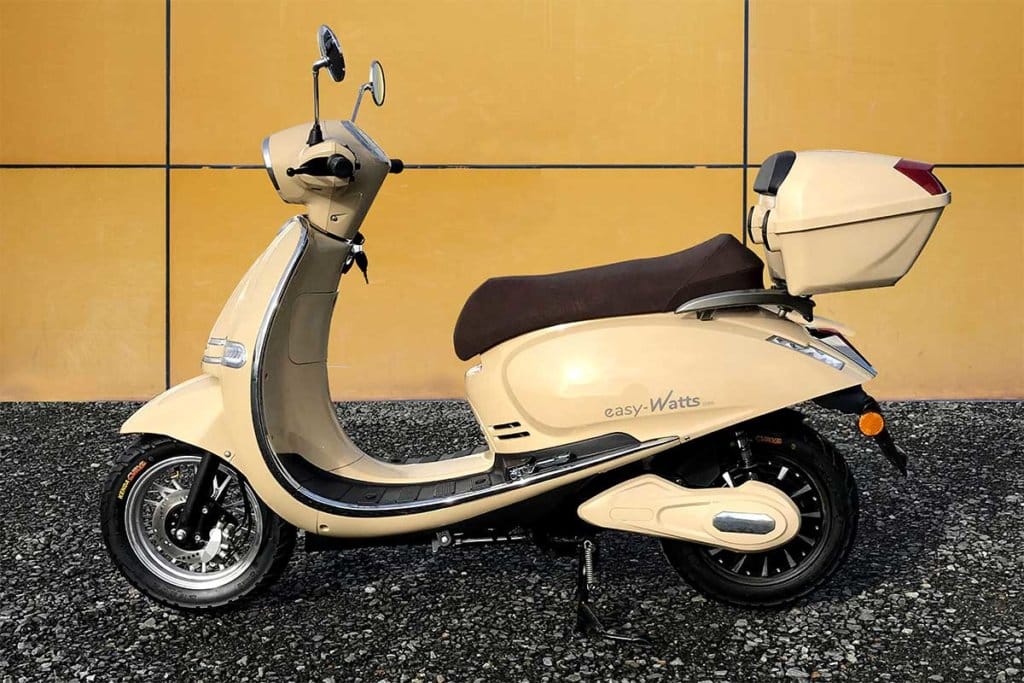What's the difference between electric and internal combustion scooters?
What are the main differences between electric and internal combustion scooters? Many people opt for the two-wheel option, but many questions remain unanswered: which two wheels should I choose? And above all, combustion or electric?
We have selected for you the fundamental differences between electric two-wheelers and combustion two-wheelers.
The price
When it comes to buying a two-wheeler, one of the first questions to ask is the purchase price. Depending on the brand and equipment, this can vary considerably. So, for most of us, the budget allocated to the purchase of our two-wheeler is one of the determining factors. For many, electric bikes are expensive and reserved for the well-off. However, with a few exceptions, this preconception is false, and it is now possible, thanks in particular to the various financial assistanceIt's now possible to find a wide choice of electric scooters for less than €4,000.
Purchase price is not a barrier to the transition to electric in the two-wheeled world, and affordable options are many and varied. The various financial assistance such as local grants are also a major boost to this transition, making electric scooters and electric scooters and motorcycles more than competitive with combustion engines. To find out all you need to know about subsidies for two-wheelers, we've covered the subject here.
Full tank
The purchase price is far from being the only expense, and you need to think about overall running costs. For example, the cost of recharging - there's quite a difference between electric and internal combustion vehicles. The cost of fuel averages 2.029 € while kWh costs 0.15 cents.
To get a better idea of the difference in costs, let's take a concrete example: a 50cc lambda consumes an average of 2.5 liters per 100 km, so you'll need to pay €4.1. Driving 100 km with an electric scooterwith a 1.8 kWh battery will cost you 26 centimes.
It is then less expensive to travel 100 km with an electric scooter than with a combustion scooter of equivalent displacement. There are also various ways of recharging your electric scooter, for example directly at charging stations outdoors or at home.
As a result, an electric two-wheeler is not necessarily more expensive than a combustion one, both to buy and to run. It turns out that, over time, they're even more economical than most combustion engines.
After the question of price and cost, let's talk aboutrange. What's the point of having an electric scooter if it can't get me to my destination on a single charge?
On average, an electric scooter covers 50 to 170 km of range per charge, which more than covers the daily needs of most users. Battery life varies from scooter to scooter, so you'll need to plan ahead. It's a good idea to find out about your scooter's battery.
It's true that it's often more comfortable to fill up in a few minutes with a combustion scooter than to wait 3 or 5 hours with an electric scooter. However, you have to ask yourself whether it's better to pay several dozen euros or wait a few hours to recharge your battery ?
Performance
When it comes to two-wheelers, performance is also a key factor. And in this respect, electric bikes are far from being outdone. The high torque and instant availability at any engine speed ensure that electric two-wheelers can accelerate and pick up speed far more quickly than their internal combustion counterparts.
These various points show that electric power, in general and particularly in the world of two-wheelers, is a viable alternative and, in many ways, a highly advantageous alternative to internal combustion. Today, electric is synonymous with practicality, performance and economy, and it would be a shame to overlook it when looking for a motorcycle or scooter. motorcycle or scooter.
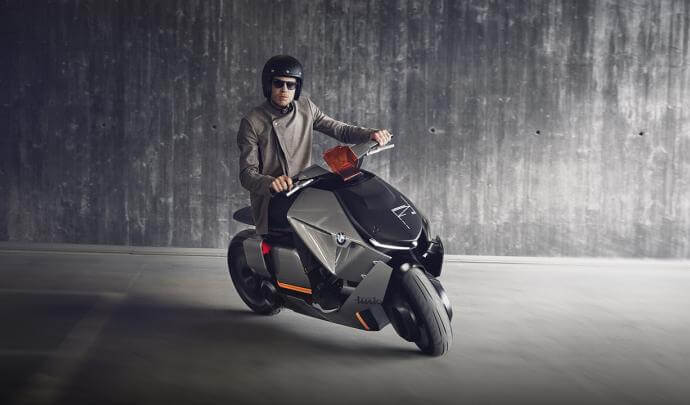
Why buy an electric scooter?
The purchase of a two-wheeler requires a certain amount of thought, and more often than not requires a comparison between motorcycle and scooter. Various criteria need to be taken into account to determine which vehicle best meets your expectations. To help you make your choice, we've put together a comparison chart that you can find right here here.
Electric scooters are more economical
Unlike its internal combustion counterpart, the 50 cm³ and 125 cm³ electric scooter is both ecological and economical. This model runs on electricity stored in its battery. As such, it consumes no fuel. As the cost of electricity is lower than that of fuel, it saves you money in the long term.
Low-maintenance electric scooters
In addition, like an electric scooter requires no oil for lubrication and no fuel, it emits no gases or pollutants whatsoever. Electric scooters are also silent. They offer greater comfort when you're out and about in town.
An electric scooter has no mechanical parts such as chain, belt, clutch, piston ring, cylinder head gasket, etc. cylinder head gasket and spark plugs. Nor does it require oil changes. This makes it easier to maintain than a combustion model.
The electric scooter is ideal for the city
In addition, this type of two-wheeler offers a range of 50 km to 170 km per charge, depending on the model and battery power. battery. What's more, an electric scooter produces no noise pollution, making it ideal for urban travel. Indeed, these days, noise pollution is a major problem in our cities, partly due to the use of combustion-powered two-wheelers.
Support for electric scooters
You should know that the French government offers an ecological bonus to people wishing to acquire an electric scooter. This aid amounts to up to 2 100 €. You can take advantage of it at the time of purchase, or be reimbursed following a claim. To find out all you need to know about aid for two-wheeled vehicles, we've covered the subject here.
How to choose an electric scooter
Have you decided to switch to an electric scooter? Before taking the plunge, consider the following criteria:
- Use : Choosing the scooter of your dreams can depend on its level of autonomy and its level of use, such as going to work or going for a weekend ride.
- Model: current models are equipped with a Lithium battery. It's lighter, more durable and offers greater autonomy.
- License: a 50 cm³ electric scooter develops between 1,000 and 4,000 watts of power. This category, known as L1e "can be used without a license from the age of 14. Above 4,000 watts, the two-wheeler is considered a 125 cm³. Consequently, it requires a B license, as well as a 125 cm³ training.
- Warranty: Electric scooters are guaranteed against manufacturing defects for 2 years. This covers replacement parts and labor.
How can I get an electric scooter without a license?
Yes, that's right! You can buy an electric scooter even if you don't have a license. Most of the current range of electric scooters is available without a license: the 50 cm³ equivalents can be driven without a license from the age of 14, with a BSR. Here are just a few of the features that make an electric scooter recognizable without a license:
- Maximum power: an electric scooter is equivalent to a 50cc scooter , i.e. a scooter powered by a motor with a maximum output of 4,000 watts.
- Size: an unlicensed electric scooter is small, with two wheels, a seat and a board between the seat and handlebars.
- Maximum speed: the maximum speed an electric scooter can reach is 50 km/h, as it has been limited to keep within this limit.
- Handling: electric scooters are very easy to handle.
- Safety: an unlicensed electric scooter is equipped with all the safety devices required by safety regulations, including headlights, indicators, brakes, etc.
Want to go electric?
Beev offers multi-brand 100% electric vehicles at the best prices, as well as recharging solutions.
Top 11 best electric scooters
BMW CE 04

With the BMW CE 04you can experience tomorrow's urban mobility today, without having to make any sacrifices. On the contrary, this electric maxi-scooter combines durability, dynamics and agility in one eye-catching design.
Fuel consumption: 7.7 kWh/100 km
Range: 130 km (WLTP)
Price : 12 150 € (excluding environmental bonus)
Slow charge (0 to 100%): 4h30
Fast recharge (0 to 80%): 65 min.
Availability: Immediate
Rider NG
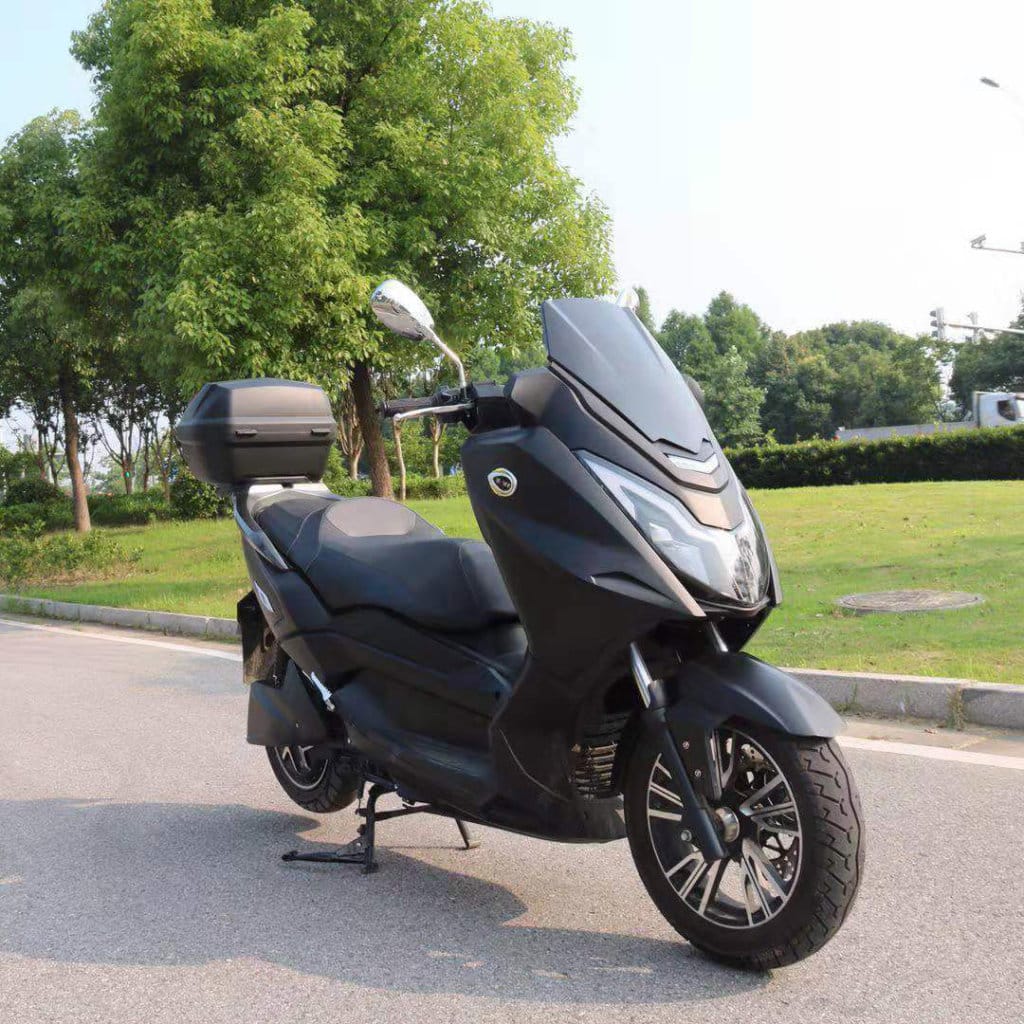
The latest addition to the Rider range of electric scooters, the Rider NG is an electric maxi-scooter in the 125 cm³ equivalent category, offering up to 260 km of range on a single charge.
- Fuel consumption: 120 kWh/100 km
- Range: 260 km (WLTP)
- Price : 9 449 € (excluding environmental bonus)
- Slow recharge (0 to 100%): 6h
- Fast charge (0 to 80%): 3h30
- Availability: Immediate
SwapperOne by ZEWAY
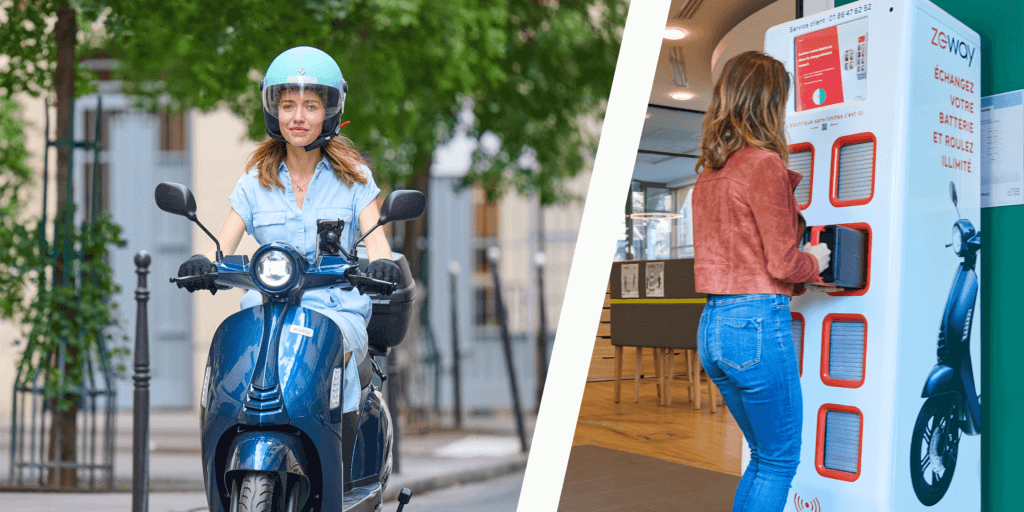
ZEWAY offers a subscription-based personal electric scooter service.
The swapperOne electric scooter from ZEWAYis a little jewel of technology that recharges your scooter's battery in less than 50 seconds! A real feat. All you have to do is charge it at one of the 40 battery exchange stations located throughout Paris and its inner suburbs. For each charge, you'll be able to cover more than 40 km. The swapperOne model revisits the 50 cm³ equivalent category: at once maneuverable (74 kg), responsive (less than 5 s to reach 40 km/h) and powerful (3 kW Bosch motor).
- Range: 40 km (WLTP) between 2 battery changes
- Price: Subscription €130/month all-inclusive (insurance, maintenance and unlimited KM)
- In-station recharging: 50 seconds to exchange an empty battery for a full one
- Home charging with ZEWAY charging dock: 4 h
- Availability: Immediate
Rider 9000W Long Range
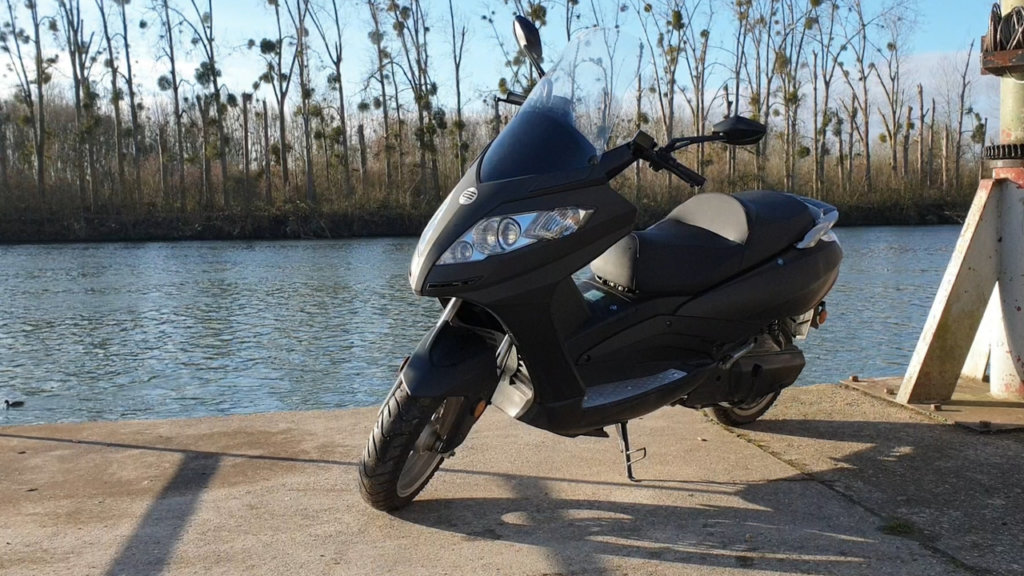
The Rider 9000W Long Range is the long-range version of the Rider 9000W. Accessible with a B license and 125 training, it can reach 120 km/h in just a few seconds, with a maximum range of 220 km per charge.
- Fuel consumption: 120 kWh/100 km
- Range: 220 km (WLTP)
- Price : 9 490 € (excluding environmental bonus)
- Slow charge (0 to 100%): 4h
- Fast charge (0 to 80%): 3h30
- Availability: Immediate
Brumaire electric scooter
Brumaire is a top-of-the-range 50cc-equivalent electric scooter. Its Bosch 3000W motor and two Samsung batteries guarantee range, acceleration, comfort and roadholding.
- Fuel consumption: 2.4 kWh/100 km
- Range: 100 km (WLTP)
- Price: €2,990 (excluding environmental bonus)
- Slow recharge (0 to 100%): 5h
- Fast charge (0 to 80%): 4h
- 🗓️ Availability: Immediate
Nui N-Series
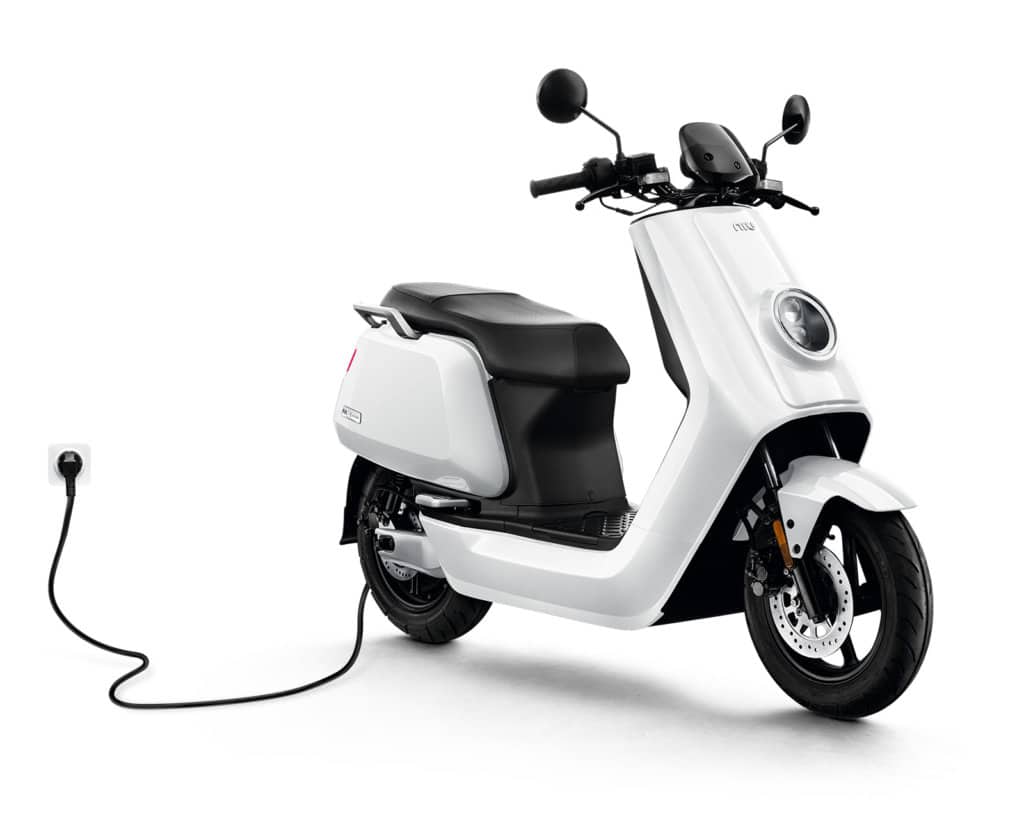
Approved in the 50 cm³ equivalent category, the N-Series is fitted with an electric motor from German equipment manufacturer Bosch, capable of developing 2400 watts of power.
- Fuel consumption: 45 kWh/100 km
- Range: 80 km (WLTP)
- Price : 2 899 € (excluding environmental bonus)
- Slow recharge (0 to 100%): 6h
- Fast recharge (0 to 80%) : -
- Availability: Immediate
Rider 3000W 2020
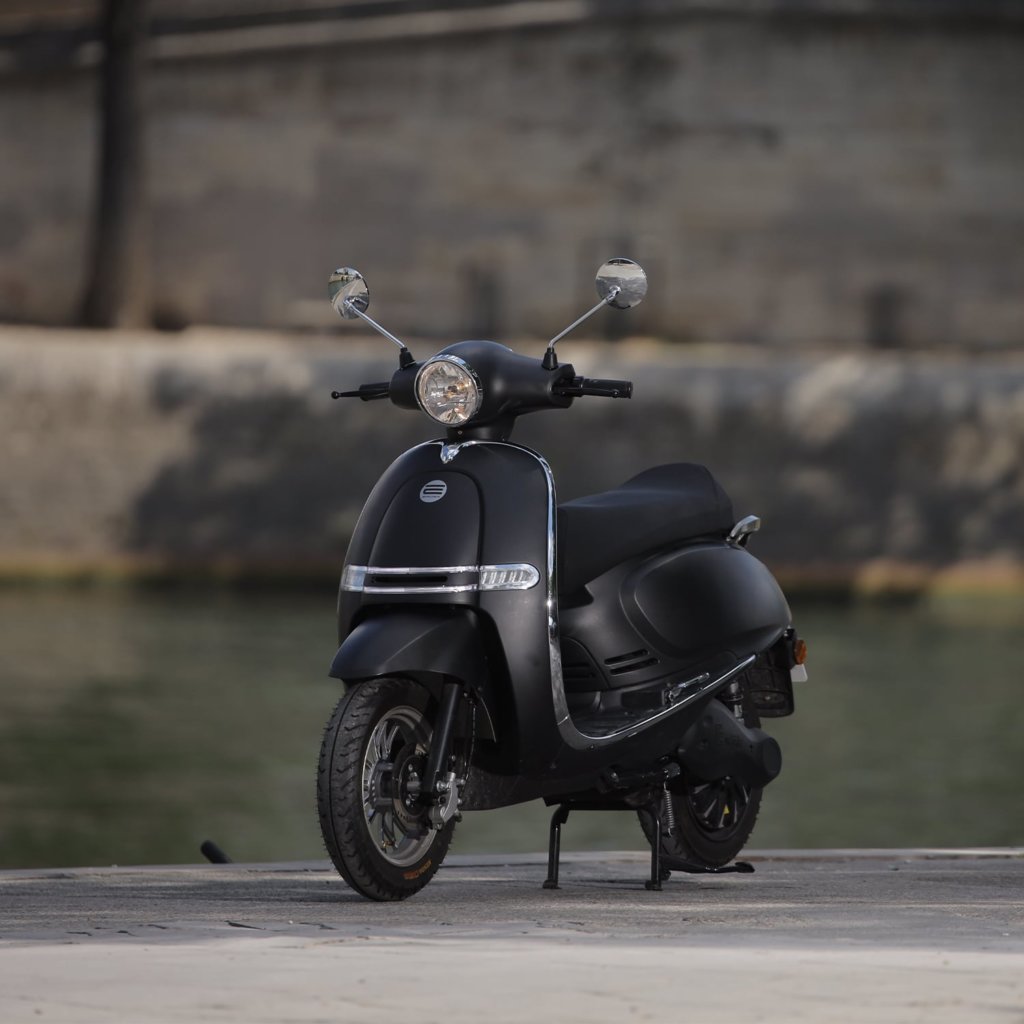
The Rider 3000W is an electric scooter accessible without a license that scores all the right points: elegance, acceleration, comfort and roadholding.
- Fuel consumption: 85 kWh/100 km
- Range: 45 km (WLTP)
- Price : 2 890 € (excluding environmental bonus)
- Slow recharge (0 to 100%): 5h
- Fast charge (0 to 80%): 4h30
- Availability: Immediate
E-presto 125
Virtually identical to the Rider 5000, the e-presto 125 is a little less expensive, as its power output is only 4,000 kW, which limits it to 80 km/h, while its range is a little lower.
- Fuel consumption: 80 kWh/100 km
- Range: 50 km (WLTP)
- Price : 4 299 € (excluding environmental bonus)
- Slow recharge (0 to 100%): 5h
- Fast charge (0 to 80%): 4h30
- Availability: Immediate
Vespa Ellectrica
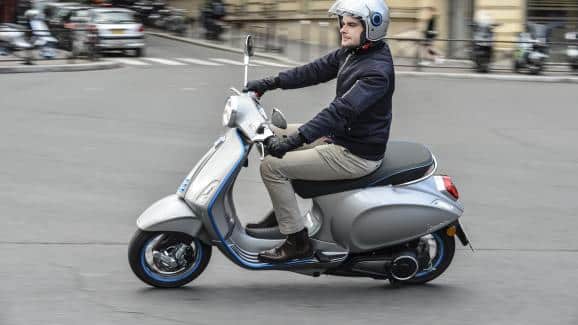
Vespa Elettrica is an electric scooter packed with technology that continues to reinvent itself and keep pace with the times.
- Fuel consumption: 45 kWh/100 km
- Range: 100 km (WLTP)
- Price : 6 390 € (excluding environmental bonus)
- Slow charge (0 to 100%): 4h
- Fast recharge (0 to 80%) : -
- Availability: Immediate
Seat MÓ 125
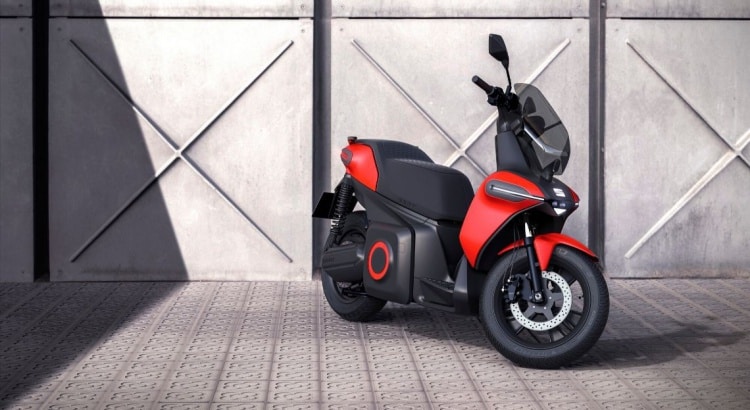
Spearheading the Volkswagen Group's micro-mobility business, Seat has launched its first electric scooter, the Seat MÓ 125.
- Fuel consumption: 5.85/100 km
- Range: 137 km (WLTP)
- Price : 6 700 € (excluding environmental bonus)
- Slow recharge (0 to 100%) : NC
- Fast recharge (0 to 80%) : NC
- Availability: Immediate
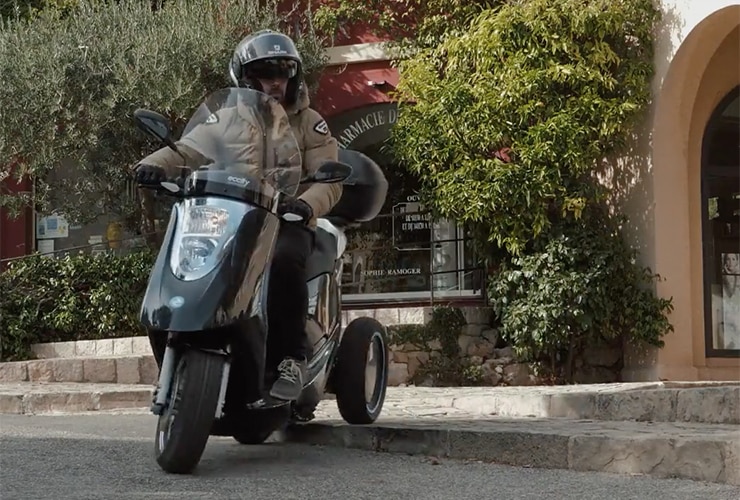
Eccity Model 3
Primarily intended for corporate and public sector fleets, theEccity Model 3 is priced from €10,000. Powered by two electric motors distributed between the two rear wheels, the model combines up to 14 kW of peak power and can reach top speeds of up to 110 km/h.
- Fuel consumption: 110 kWh/100 km
- Range: 100 km (WLTP)
- Price : 10 000 € (excluding environmental bonus)
- Slow charge (0 to 100%): 3h
- Fast charge (0 to 80%): 2h45
- Availability: Immediate
Super Soco Cpx
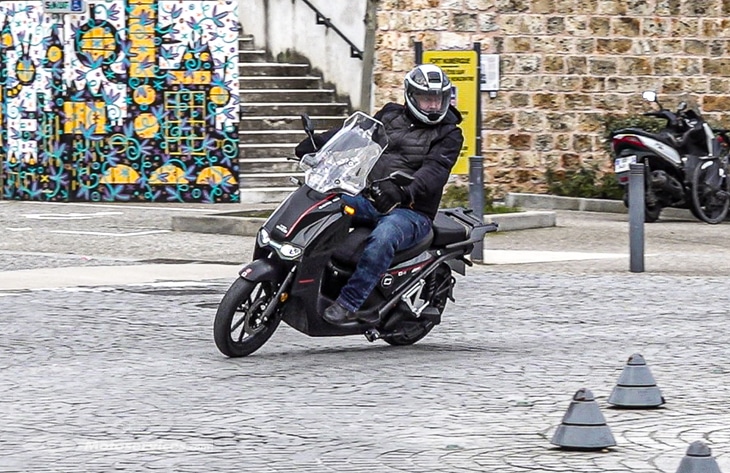
To complement the Super Soco CU-Xthe Super Soco Cpx is powered by a 4 kW Bosch motor. With a top speed of 90 km/h, it is powered by two removable batteries, providing up to 140 km of range on a single charge.
- Fuel consumption: 90 kWh/100 km
- Range: 140 km (WLTP)
- Price : 4 790 € (excluding environmental bonus)
- Slow charge (0 to 100%): 3h
- Fast charge (0 to 80%): 2h30
- Availability: from the second half of 2020
Today, there are an increasing number of electric vehicles and this is only set to increase over the next few years. If you thought the electric world was all about cars and bikes, you'd be wrong. There are plenty of electric scooter models to suit all tastes, so all you have to do is make your choice.
Electric motorcycles and scooters arrive at Beev!
Join our waiting list to be the first to know about our offers!
